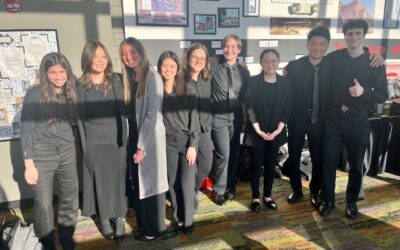By Elizabeth F. McNamara
East Greenwich is on track to get $630,000 less in state education aid for fiscal year 2020, a drop that had some local officials wondering why and if there was anything to be done about it.
At a meeting Tuesday with the state House fiscal advisor, the picture got a little clearer for school and town officials but, as Council Vice President Mike Donegan said in an interview, that doesn’t mean there will be more money for East Greenwich.
“There’s not going to be any relief coming for us from the General Assembly,” he said.
The meeting was set up by EG’s state Rep. Justine Caldwell (Dist. 30). Among those in attendance were Donegan, School Committee Chair Carolyn Mark, School Committeeman Jeff Dronzek and Supt. Victor Mercurio.
 East Greenwich has always been one of the communities in the state that receive the lowest state aid for education. That’s not news. Yet, when the state finally enacted a funding formula in 2012, East Greenwich was one of the communities classified as having been underfunded for many years, so EG had a succession of years with substantial funding increases. That ended in 2018 and, hypothetically, the year-to-year swing in aid should be pretty narrow going forward, giving districts an ability to plan.
East Greenwich has always been one of the communities in the state that receive the lowest state aid for education. That’s not news. Yet, when the state finally enacted a funding formula in 2012, East Greenwich was one of the communities classified as having been underfunded for many years, so EG had a succession of years with substantial funding increases. That ended in 2018 and, hypothetically, the year-to-year swing in aid should be pretty narrow going forward, giving districts an ability to plan.
However, the $631,000 drop for next year’s aid belies that idea.
For the meeting Tuesday, House Fiscal Advisor Sharon Ferland produced a memo breaking down the funding formula (find it here: Funding Formula Analysis), and there are a few issues at play.
Ferland explained that every community is awarded aid based on its “state share ratio,” a percentage derived by calculating local property values and the median family income. This is the number that signifies East Greenwich’s low position when it comes to state education aid in general since EG’s property values and median family income numbers are both high compared with the rest of the state.
The variation in the SSR from year to year will dictate exactly how much East Greenwich receives. The lower the state share ratio, the less aid a community gets. In 2014, EG’s SSR was 16.9 percent. Since then, it has see-sawed a bit, down to 8.7 percent in 2017 but back up to 12.3 percent in 2019. It is projected to be 9.9 percent for fiscal year 2020.
That 9.9 percent SSR calculates out to $2,487,529 in total aid to East Greenwich, which is $631,744 less than in 2019 (more than 20 percent less). The real decrease is $488,034, with an additional $143,710 to cover an overpayment by the state last year.
About that overpayment. According to Ferland, the state Division of Municipal Finance made an inputting error when calculating the funding formula for 2019 that was discovered during an audit. Some communities got less than they should have and some, like East Greenwich, got more. Now the state wants to make things right, meaning $143,000 less for EG this year.
One reason for EG’s funding drop in 2020 is the town has fewer children living in poverty in the most recent calculation, from 9 percent in 2019 to 8 percent in 2020. And future might bring yet a lower SSR. That’s because EG’s property revaluation from 2018 hasn’t been factored into the formula yet. When it is, there’s a good chance EG values have increased at a greater rate than other communities, resulting in a lower SSR.
There is another challenge built into the funding formula timeline: while there are proposed aid numbers out now, the state could ultimately decide to give more, or less, money for education in 2020. However, it doesn’t usually pass its budget until the end of June, after the East Greenwich Town Council has had to vote on its budget. So, the town must make its budget calculations using a number that could change.
“We are experiencing swings in the funding formula that exceed our ability to plan,” said Mark. Her hope would be that the state could find a way to smooth out those swings.
For Caldwell, the meeting was an opportunity to make sure everyone – Town Council, School Committee, and state elected officials – were on the same page when it comes to state aid for education.
“On that score, I think our meeting was successful,” she said via email. “I think we now have the knowledge we need to make plans about state funding for the remaining term of this formula.”
For more on the funding formula, refer to Ferland’s memo (see link, above), which offers EG-specific information as well as providing statewide data. And here’s a link to the R.I. Dept. of Education’s Funding Formula Reference Guide.






 Subscribe
Subscribe